Dejanira Araiza-Illan
A Corroborative Approach to Verification and Validation of Human--Robot Teams
Aug 15, 2018

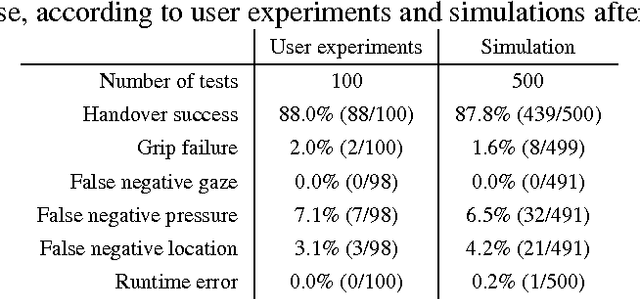
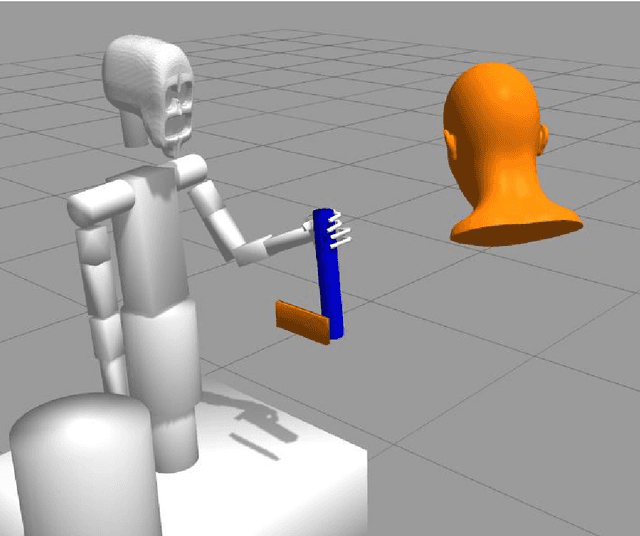
Abstract:We present an approach for the verification and validation (V&V) of robot assistants in the context of human-robot interactions (HRI), to demonstrate their trustworthiness through corroborative evidence of their safety and functional correctness. Key challenges include the complex and unpredictable nature of the real world in which assistant and service robots operate, the limitations on available V&V techniques when used individually, and the consequent lack of confidence in the V&V results. Our approach, called corroborative V&V, addresses these challenges by combining several different V&V techniques; in this paper we use formal verification (model checking), simulation-based testing, and user validation in experiments with a real robot. We demonstrate our corroborative V&V approach through a handover task, the most critical part of a complex cooperative manufacturing scenario, for which we propose some safety and liveness requirements to verify and validate. We construct formal models, simulations and an experimental test rig for the HRI. To capture requirements we use temporal logic properties, assertion checkers and textual descriptions. This combination of approaches allows V&V of the HRI task at different levels of modelling detail and thoroughness of exploration, thus overcoming the individual limitations of each technique. Should the resulting V&V evidence present discrepancies, an iterative process between the different V&V techniques takes place until corroboration between the V&V techniques is gained from refining and improving the assets (i.e., system and requirement models) to represent the HRI task in a more truthful manner. Therefore, corroborative V&V affords a systematic approach to 'meta-V&V,' in which different V&V techniques can be used to corroborate and check one another, increasing the level of certainty in the results of V&V.
Effects of Faults, Experience, and Personality on Trust in a Robot Co-Worker
Mar 09, 2017



Abstract:To design trustworthy robots, we need to understand the impact factors of trust: people's attitudes, experience, and characteristics; the robot's physical design, reliability, and performance; a task's specification and the circumstances under which it is to be performed, e.g. at leisure or under time pressure. As robots are used for a wide variety of tasks and applications, robot designers ought to be provided with evidence and guidance, to inform their decisions to achieve safe, trustworthy and efficient human-robot interactions. In this work, the impact factors of trust in a collaborative manufacturing scenario are studied by conducting an experiment with a real robot and participants where a physical object was assembled and then disassembled. Objective and subjective measures were employed to evaluate the development of trust, under faulty and non-faulty robot conditions, and the effect of previous experience with robots, and personality traits. Our findings highlight differences when compared to other, more social, scenarios with robotic assistants (such as a home care assistant), in that the condition (faulty or not) does not have a significant impact on the human's perception of the robot in terms of human-likeliness, likeability, trustworthiness, and even competence. However, personality and previous experience do have an effect on how the robot is perceived by participants, even though that is relatively small.
Risk-based Triggering of Bio-inspired Self-Preservation to Protect Robots from Threats
Feb 22, 2017



Abstract:Safety in autonomous systems has been mostly studied from a human-centered perspective. Besides the loads they may carry, autonomous systems are also valuable property, and self-preservation mechanisms are needed to protect them in the presence of external threats, including malicious robots and antagonistic humans. We present a biologically inspired risk-based triggering mechanism to initiate self-preservation strategies. This mechanism considers environmental and internal system factors to measure the overall risk at any moment in time, to decide whether behaviours such as fleeing or hiding are necessary, or whether the system should continue on its task. We integrated our risk-based triggering mechanism into a delivery rover that is being attacked by a drone and evaluated its effectiveness through systematic testing in a simulated environment in Robot Operating System (ROS) and Gazebo, with a variety of different randomly generated conditions. We compared the use of the triggering mechanism and different configurations of self-preservation behaviours to not having any of these. Our results show that triggering self-preservation increases the distance between the drone and the rover for many of these configurations, and, in some instances, the drone does not catch up with the rover. Our study demonstrates the benefits of embedding risk awareness and self-preservation into autonomous systems to increase their robustness, and the value of using bio-inspired engineering to find solutions in this area.
Model-based Test Generation for Robotic Software: Automata versus Belief-Desire-Intention Agents
Dec 12, 2016
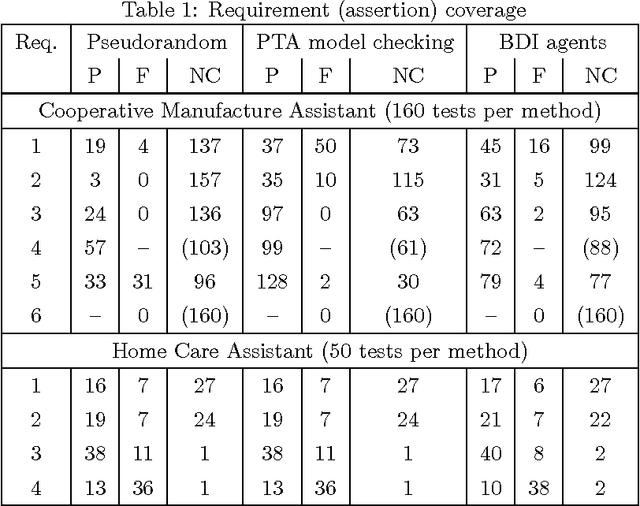
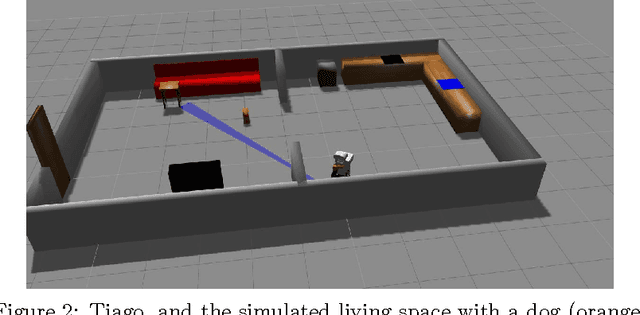
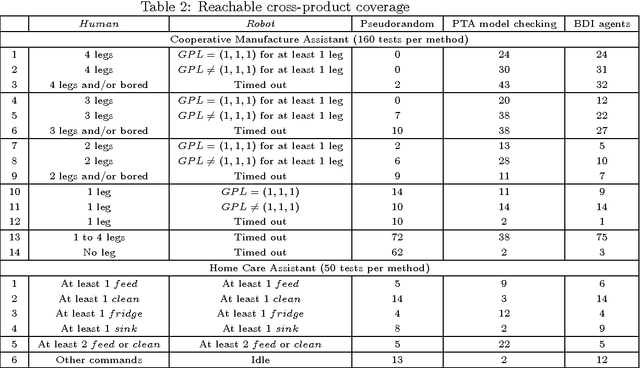
Abstract:Robotic code needs to be verified to ensure its safety and functional correctness, especially when the robot is interacting with people. Testing real code in simulation is a viable option. However, generating tests that cover rare scenarios, as well as exercising most of the code, is a challenge amplified by the complexity of the interactions between the environment and the software. Model-based test generation methods can automate otherwise manual processes and facilitate reaching rare scenarios during testing. In this paper, we compare using Belief-Desire-Intention (BDI) agents as models for test generation with more conventional automata-based techniques that exploit model checking, in terms of practicality, performance, transferability to different scenarios, and exploration (`coverage'), through two case studies: a cooperative manufacturing task, and a home care scenario. The results highlight the advantages of using BDI agents for test generation. BDI agents naturally emulate the agency present in Human-Robot Interactions (HRIs), and are thus more expressive than automata. The performance of the BDI-based test generation is at least as high, and the achieved coverage is higher or equivalent, compared to test generation based on model checking automata.
Formal Specification and Analysis of Autonomous Systems under Partial Compliance
Jul 22, 2016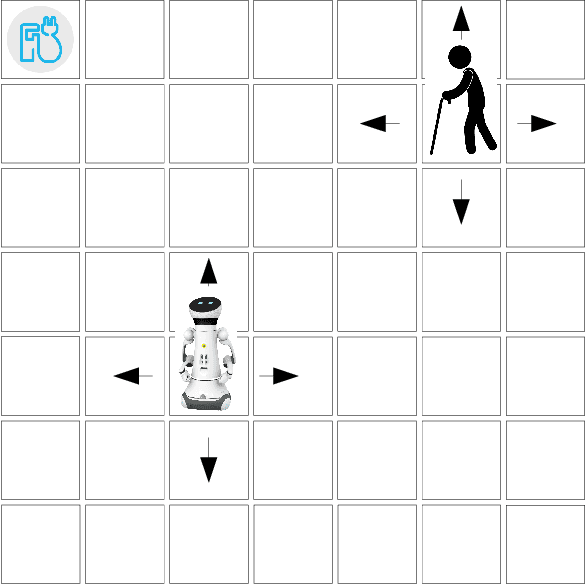
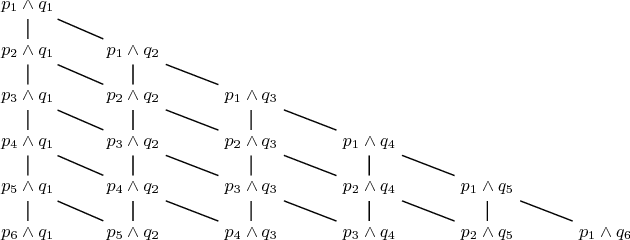
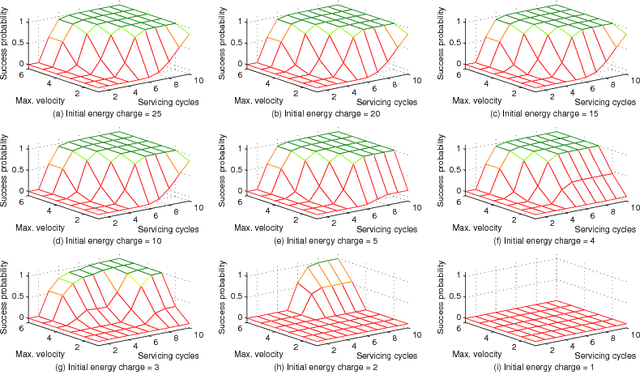
Abstract:The widespread adoption of autonomous systems depends on providing guarantees of safety and functional correctness, at both design time and runtime. Information about the extent to which functional requirements can be met in combination with non-functional requirements (NFRs) -- i.e. requirements that can be partially complied with -- , under dynamic and uncertain environments, provides opportunities to enhance the safety and functional correctness of systems at design time. We present a technique to formally define system attributes that can change or be changed to deal with dynamic and uncertain environments (denominated weakened specifications) as a partially ordered lattice, and to automatically explore the system under different specifications, using probabilistic model checking, to find the likelihood of satisfying a requirement. The resulting probabilities form boundaries of "optimal specifications", analogous to Pareto frontiers in multi-objective optimization, informing the designer about the system's capabilities, such as resilience or robustness, when changing its attributes to deal with dynamic and uncertain environments. We illustrate the proposed technique through a domestic robotic assistant example.
Systematic and Realistic Testing in Simulation of Control Code for Robots in Collaborative Human-Robot Interactions
Jul 13, 2016
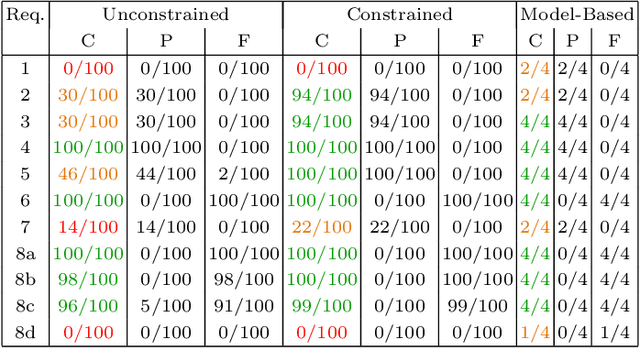
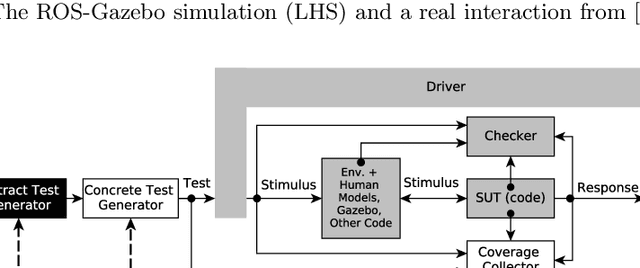
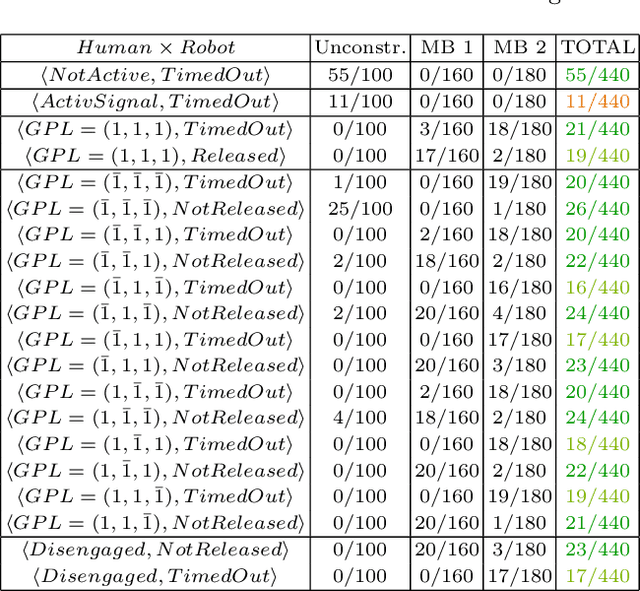
Abstract:Industries such as flexible manufacturing and home care will be transformed by the presence of robotic assistants. Assurance of safety and functional soundness for these robotic systems will require rigorous verification and validation. We propose testing in simulation using Coverage-Driven Verification (CDV) to guide the testing process in an automatic and systematic way. We use a two-tiered test generation approach, where abstract test sequences are computed first and then concretized (e.g., data and variables are instantiated), to reduce the complexity of the test generation problem. To demonstrate the effectiveness of our approach, we developed a testbench for robotic code, running in ROS-Gazebo, that implements an object handover as part of a human-robot interaction (HRI) task. Tests are generated to stimulate the robot's code in a realistic manner, through stimulating the human, environment, sensors, and actuators in simulation. We compare the merits of unconstrained, constrained and model-based test generation in achieving thorough exploration of the code under test, and interesting combinations of human-robot interactions. Our results show that CDV combined with systematic test generation achieves a very high degree of automation in simulation-based verification of control code for robots in HRI.
Intelligent Agent-Based Stimulation for Testing Robotic Software in Human-Robot Interactions
Jul 13, 2016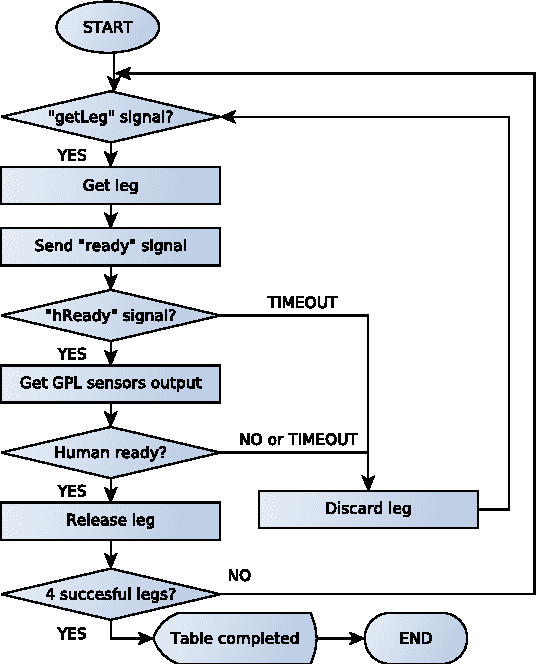


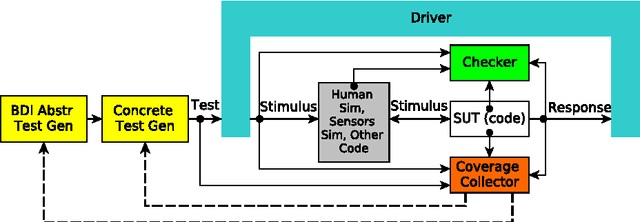
Abstract:The challenges of robotic software testing extend beyond conventional software testing. Valid, realistic and interesting tests need to be generated for multiple programs and hardware running concurrently, deployed into dynamic environments with people. We investigate the use of Belief-Desire-Intention (BDI) agents as models for test generation, in the domain of human-robot interaction (HRI) in simulations. These models provide rational agency, causality, and a reasoning mechanism for planning, which emulate both intelligent and adaptive robots, as well as smart testing environments directed by humans. We introduce reinforcement learning (RL) to automate the exploration of the BDI models using a reward function based on coverage feedback. Our approach is evaluated using a collaborative manufacture example, where the robotic software under test is stimulated indirectly via a simulated human co-worker. We conclude that BDI agents provide intuitive models for test generation in the HRI domain. Our results demonstrate that RL can fully automate BDI model exploration, leading to very effective coverage-directed test generation.
Model-Based Testing, Using Belief-Desire-Intentions Agents, of Control Code for Robots in Collaborative Human-Robot Interactions
Mar 02, 2016



Abstract:The software of robotic assistants needs to be verified, to ensure its safety and functional correctness. Testing in simulation allows a high degree of realism in the verification. However, generating tests that cover both interesting foreseen and unforeseen scenarios in human-robot interaction (HRI) tasks, while executing most of the code, remains a challenge. We propose the use of belief-desire-intention (BDI) agents in the test environment, to increase the level of realism and human-like stimulation of simulated robots. Artificial intelligence, such as agent theory, can be exploited for more intelligent test generation. An automated testbench was implemented for a simulation in Robot Operating System (ROS) and Gazebo, of a cooperative table assembly task between a humanoid robot and a person. Requirements were verified for this task, and some unexpected design issues were discovered, leading to possible code improvements. Our results highlight the practicality of BDI agents to automatically generate valid and human-like tests to get high code coverage, compared to hand-written directed tests, pseudorandom generation, and other variants of model-based test generation. Also, BDI agents allow the coverage of combined behaviours of the HRI system with more ease than writing temporal logic properties for model checking.
Coverage-Driven Verification - An approach to verify code for robots that directly interact with humans
Sep 16, 2015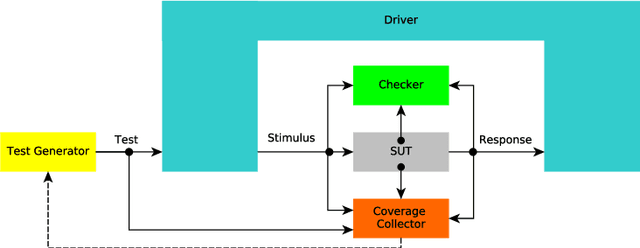

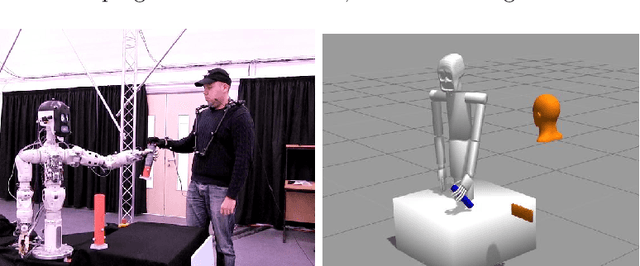
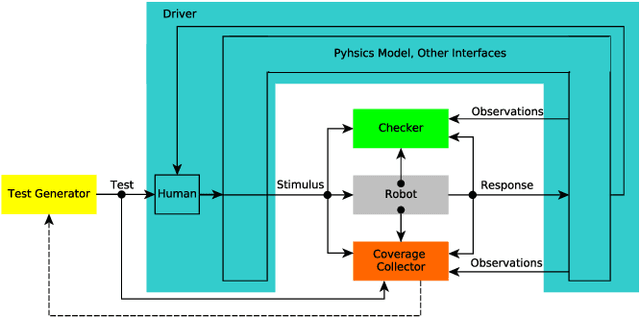
Abstract:Collaborative robots could transform several industries, such as manufacturing and healthcare, but they present a significant challenge to verification. The complex nature of their working environment necessitates testing in realistic detail under a broad range of circumstances. We propose the use of Coverage-Driven Verification (CDV) to meet this challenge. By automating the simulation-based testing process as far as possible, CDV provides an efficient route to coverage closure. We discuss the need, practical considerations, and potential benefits of transferring this approach from microelectronic design verification to the field of human-robot interaction. We demonstrate the validity and feasibility of the proposed approach by constructing a custom CDV testbench and applying it to the verification of an object handover task.
Symmetry Reduction Enables Model Checking of More Complex Emergent Behaviours of Swarm Navigation Algorithms
Jun 16, 2015



Abstract:The emergent global behaviours of robotic swarms are important to achieve their navigation task goals. These emergent behaviours can be verified to assess their correctness, through techniques like model checking. Model checking exhaustively explores all possible behaviours, based on a discrete model of the system, such as a swarm in a grid. A common problem in model checking is the state-space explosion that arises when the states of the model are numerous. We propose a novel implementation of symmetry reduction, in the form of encoding navigation algorithms relatively with respect to a reference, based on the symmetrical properties of swarms in grids. We applied the relative encoding to a swarm navigation algorithm, Alpha, modelled for the NuSMV model checker. A comparison of the state-space and verification results with an absolute (or global) and a relative encoding of the Alpha algorithm highlights the advantages of our approach, allowing model checking larger grid sizes and number of robots, and consequently, verifying more complex emergent behaviours. For example, a property was verified for a grid with 3 robots and a maximum allowed size of 8x8 cells in a global encoding, whereas this size was increased to 16x16 using a relative encoding. Also, the time to verify a property for a swarm of 3 robots in a 6x6 grid was reduced from almost 10 hours to only 7 minutes. Our approach is transferable to other swarm navigation algorithms.
 Add to Chrome
Add to Chrome Add to Firefox
Add to Firefox Add to Edge
Add to Edge